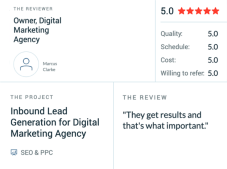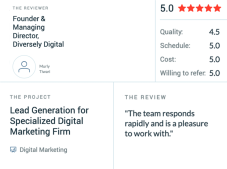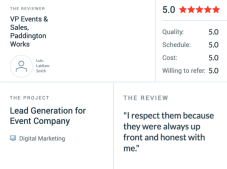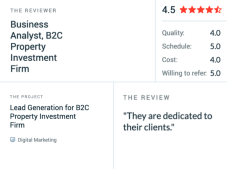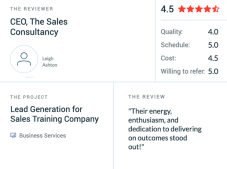What Is Lead Management? Definition, Process, Best Practices, and Platforms
For businesses looking to expand their customer base and connect with a large audience, lead management is crucial. In this primer, we cover the definition of lead management, best practices for gathering and managing leads, and prominent platforms like Salesforce.
What Is Lead Management?
Any person or business that might be interested in your product is referred to as a lead. This interest can be shown by exchanging contact information, selecting the “register now” link, going to your website, watching a product video, or taking any other action. Lead management uses the information a lead offers to systematically classify them and schedule the action items.
As a result, lead management is a broad topic that encompasses almost all sales techniques used to generate and convert leads. Although it is possible to do this manually, it is best to use a digital platform that connects to both your website and your CRM to create a continuous lifecycle of data. The customer can then be straightforwardly led through this lifecycle, from initial interest to final conversion.
What Is A Lead Management System?
A lead management system is an instrument that helps manage potential customers effectively. It could be in notes, an Excel spreadsheet, a CRM, or any other practical format. To be used daily, the system should be as seamless as possible. If not, it won’t be useful and might become a failure for other tasks.
Understanding The 4 Stages of the Lead Management Process
This entire process can be automated and enhanced if you decide to use a digital platform by utilising analytics and artificial intelligence. A lead should generally be:
1. Tracked
Since there are numerous ways to generate leads, including through social media, email marketing, paid advertisements, and website visits, we start with automated lead generation. In the B2B industry, leads can even be obtained from phone calls; however, all of these details must be automatically entered into the tracking system.
Now that, lead behavior can be monitored. Your product will receive even more intense interest. If a lead repeatedly visits the product landing page in the same week, for instance, you can start a targeted email campaign and use content to convert the lead.
2. Distributed
This step in the lead management process is fairly straightforward. You can send the information to the appropriate sales team once the leads have been gathered and tracked.
For instance, you could have separate executives for your small-to-midsize business clients, another for a different industry, and regional sales teams. Keep in mind that your chance of conversion increases the sooner sales contacts a lead.
3. Qualified
This process was carried out manually for a very long time, relying on the knowledge and experience of sales and marketing executives. AI technology can now automatically qualify leads by monitoring the characteristics and parameters that define them.
In fact, a strong lead management tool will rate each lead according to its quality using information from lead behavior tracking and your ideal customer persona. The time required for follow-ups is significantly reduced when leads are qualified.
4. Nurtured
In a perfect world, a qualified lead would always result in a closed sale, but this isn’t always the case.
Your leads might start to lose interest, they might decide they no longer need the product, or they might be drawn to a competitor. To ensure conversion, these “warm” leads—promising but not immediately interested—need to be carefully nurtured.
5 Best Practices for Lead Management
1. Leverage targeted content for lead capturing
A key component of your lead management strategy is targeted content. It establishes your brand as a thought leader, a product expert, and a seller in addition to the B2B market. How-to guides and product reviews, even in a B2C example for lifestyle and cosmetics, can greatly increase customer confidence and maintain interest.
2. Always use cleaned lead data
Your sales and marketing system’s data is what determines how successful your campaigns are. The “Garbage-in-Garbage-out” principle applies in this situation because your team will be expending excessive effort on fruitless follow-ups and irrelevant campaigns if your sales and CRM funnel is filled with bad leads.
3. Measure the impact of lead management efforts
It goes without saying that keeping track of which lead generation campaigns produce the best results is a crucial best practice. To increase profitability, investments in these directions can be strengthened.
4. Cast a wide net at the top of the funnel
Starting the lead management process with hot leads is not advised. Your initial lead database will likely include a range of prospects at various stages of the buying process. If you only look for hot leads, you might miss out on potential “warm” leads that could be encouraged to convert.
You can use strategies like social media presence, pay-per-click display advertising, and clearly displayed contact forms to reach a large audience at the top of the funnel.
5. Collaborate with the sales team
We cannot emphasize enough how important it is for marketing and sales to work together to develop an effective lead management strategy. While marketers are responsible for producing leads, it is the sales representative’s responsibility to follow up with, assist, and convert the prospect. These two tasks can improve conversion rates and rethink the customer experience by cooperating.
Conclusion
Lead management allows you to see and remove bottlenecks in sales, opens opportunities for constant sales development, amplifies your customer experience, and helps you in leads prioritization. Do you have any concerns? Let us know!
FAQ
What is meant by lead management?
“Lead management is defined as the methodology, process, and software used to reach prospective customers and convert them into buyers using targeted sales and marketing strategies.” Lead management is essential for companies looking to grow their customer base and reach out to a wide audience.
What does the lead process mean?
The lead process, sometimes referred to as the lead management process, is how your business finds potential customers and clients. This may be done using several different methods, including networking, cold calling, emailing or using specialized, data-driven sales prospecting tools.
What is the role of lead management?
Lead management is often a precursor to sales management, customer relationship management and customer experience management. This critical connectivity facilitates business profitability through the acquisition of new customers, selling to existing customers, and creating a market brand.







